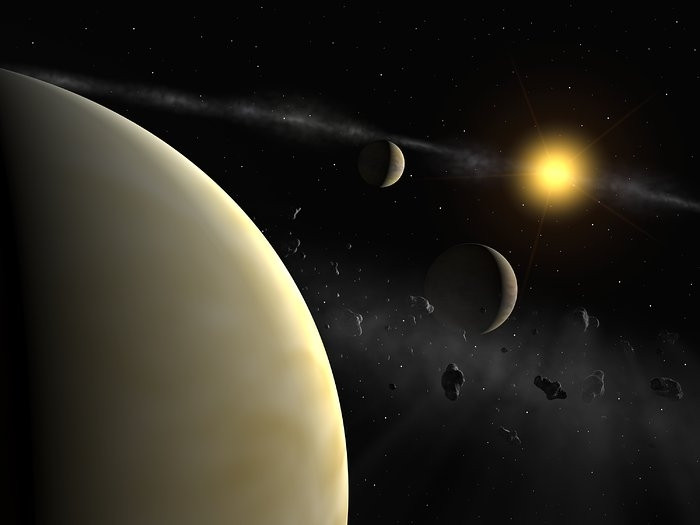Nasa's Kepler spots 3 new 'super-Earth' exoplanets orbiting a star 100 light years away from Earth
The star hosting the three newly-discovered exoplanets is the closest one to Earth found to date.
Nasa's Kepler space observatory has found three new exoplanets orbiting a star close to our solar system. The newly-discovered entities were found orbiting a K-type of dwarf star called GJ 9827, located some 100 light years away from Earth and have been classified as 'super-Earth' planetary bodies.
Super-Earth planets are exoplanets that generally have a mass greater than Earth but less than our solar system's ice giants like Neptune and Uranus.
Nasa's Kepler is one of the most prolific planet-hunting telescopes in existence. Till date, Kepler has discovered over 5,000 exoplanet candidates and confirmed the existence of over 2,400 exoplanets in the past eight years.
The discovery of the three new exoplanets was made by a team of international astronomers, led by Joseph Rodriguez of the Harvard-Smithsonian Center for Astrophysics. The team includes researchers from the University of Austin, the Massachusetts Institute of Technology (MIT) and the NASA Exoplanet Science Institute (NExSci) at Caltech.
"Our preliminary analysis shows that the GJ 9827 planets are excellent candidates for atmospheric observations. Besides, the planetary radii span both sides of the rocky and gaseous divide, hence the system will be an asset in expanding our understanding of the threshold," researchers said in their paper, which was published in Cornell University Library's ArXiv.org preprint server.
The newly-discovered exoplanets, designated as GJ 9827 b, c and d, are located fairly close to their host star, completing orbits within 6.2 days. The size, mass and distance from the host star means that all three 'alien words' are extremely hot, perhaps even as hot or hotter than Mercury and Venus. Scientists also suspect that all three exoplanets could be rocky or gaseous. Unfortunately, this means that none of the recently-found planets are likely to be habitable.
However, since these exoplanets are the closest planetary system to be spotted by Kepler's K2 mission, they are ideal for further studies to investigate the interior structure and atmosphere of exoplanets.
The researchers hope to further study the exoplanets to better determine their masses and conduct more detailed probes of their systems and structure with next-gen instruments like the James Webb Space Telescope (JWST), which is slated to be launched next year.
"I am really interested in studying the atmosphere of GJ 9827 b, whether it is rocky or puffy," said Dr Rodriguez, as per a report in Universe Today. "This planet has a radius at the rock/gas transition but it is very close to its host star. Therefore, by studying the chemical composition of its atmosphere, we may better understand the impact that the host star's proximity has on the evolution of its atmosphere.
"To do this, we would use JWST to take spectroscopic observations during the transit of GJ 9827b (known as "Transmission Spectroscopy"). From these observations, we will gather information on the chemical composition and extent of the planet's atmosphere."

© Copyright IBTimes 2025. All rights reserved.






















